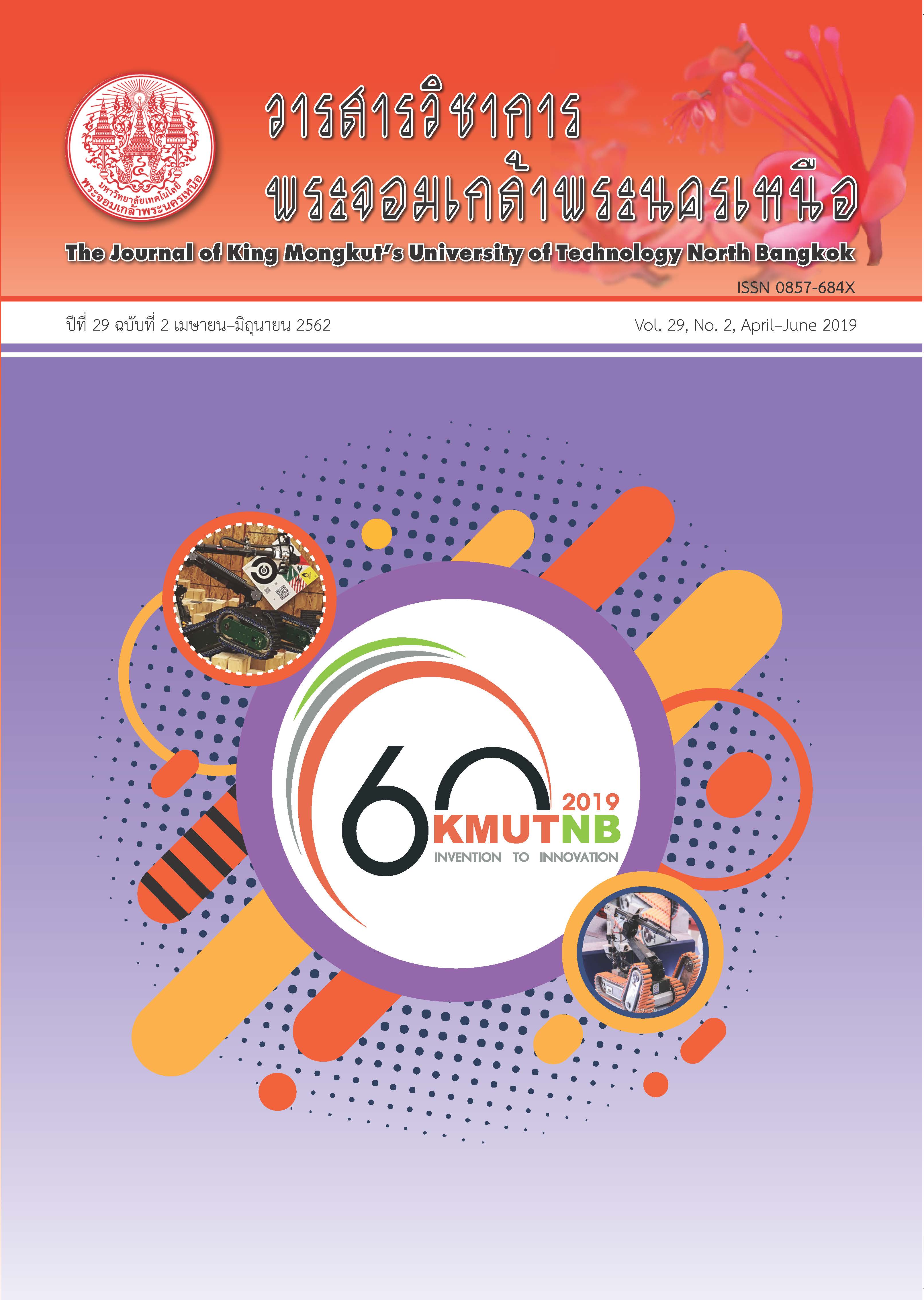Optimizing Cost and Energy Effects for Thai Fruit Export by Multi-objective Optimization Model
Main Article Content
Abstract
An efficient transport logistics system is much important for Thailand’s fruit exports because the export process consumes the time, cost and energy immensely. The fruit season comes with the increasing demand for container and trailer services as road transport is often the most flexible and common mode, resulting in substantial increase of transportation costs due to the shortage of export containers and trailers. Besides, road transportation significantly contribute to air pollution and the environmental impacts. This paper presents a methodology to improve efficiency to promote export of Thai fruits through minimizing costs and energy consumption for environmental considerations. A developed Multi-Objective Linear Programming (MOLP) model was applied for a case study investigation involving Thai mangosteen exports. Assuming an operator or exporter has five production sites domestically and fresh products must be exported overseas to five destinations. The results demonstrated the new routes set can reduce transportation costs by 8.82%. Considering different costs of transporting and its energy efficiency, the sensitivity analyses were also carried out in this study.
Article Details
The articles published are the opinion of the author only. The author is responsible for any legal consequences. That may arise from that article.
References
[2] Office of Agricultural Regulation. (2016, October). Thailand’s Fruit Export 2016. Department of Agriculture. Bangkok, Thailand [Online]. Available: http://www.doa.go.th/ard/FileUpload/export/5.4.2/FRUIT59.pdf
[3] K. Rana and R. G. Vickson, “Routing containerships using lagrangean relaxation and decomposition,” Transportation Science, vol. 22, pp. 201–214, 1991.
[4] S. C. Cho and A. N. Perakis, “Optimal liner fleet routing strategies,” Maritime Policy and Management, vol. 23, pp. 249–259, 1996.
[5] H. James and S. Neil. “Intermodal routing of Canada-Mexico shipments under NAFTA,” Transport Research Part E: Logistics and Transportation Review, vol. 34, no. 4, pp. 289–303, 1998.
[6] H. S. Hwang. “A food distribution model for famine relief,” Computer & Industrial Engineering, vol. 37, no. 1–2, pp. 335–338, 1999.
[7] E. Halvorsen-Weare , K. Fagerholt, L. M. Nonas, and B. E. Asbjornslett, “Optimal fleet composition and periodic routing of offshore supply vessels,” European Journal of Operation Research, vol. 223, no. 2, pp. 508–517, 2012.
[8] E. K. Norlund, I. Gribkovskaia, and G. Laporte, “Supply vessel planning under cost, environment and robustness considerations,” Omega, vol. 57, pp. 271–281, 2015.
[9] H. B. Bendall and A. F. Stent. “A scheduling model for a high speed container service: A hub and spoke short-sea application,” International Journal of Maritime Economics, vol. 3, no. 3, pp. 262–277, 2001.
[10] S. C. H. Leung, Y. Wu, and K. K. Lai. “An optimization model for a cross-border logistics problem: A case in Hong Kong,” Computer & Industrial Engineering, vol. 43, pp. 393–405, 2002.
[11] K. Fagerholt, “A computer-based decision support system for vessel fleet schedulingexperience and future research,” Decision Support System, vol. 37, no. 4, pp. 35–47, 2004.
[12] G. H. Tzeng, M. J. Hwang, and S. C. Ting, “Taipower’s coal logistics system: Allocation Planning and bulk fleet deployment,” International Journal of Life Cycle Assessment, vol. 25, pp. 24–46, 1995.
[13] C. L. Li and K. W. Pang, “An integrated model for ship routing and berth allocation,” International Journal of Shipping and Transport Logistics, vol. 3, no. 3, pp. 245–260, 2011.
[14] M. Battarra, J-F. Cordeau, and M. Iori, “Pickupand-delivery problems for goods transportation,” in Vehicle routing: Problems, methods and applications, Philadelphia: MOS-SIAM Series on Optimization, 2014, pp. 161–181.
[15] G. Laporte, S. Ropke, and T. Vidal, “Heuristics for the vehicle routing problem,” in Vehicle routing: problems, methods and applications, Philadelphia: MOS-SIAM Series on Optimization, 2014, pp. 87–110.
[16] J. E. Korsvik , K. Fagerholt, and G. Laporte, “A large neighbourhood search heuristic for ship routing and scheduling with split loads,” Computer Operation Research, vol. 38, no. 2, pp. 474–483, 2011.
[17] A. Hemmati, L. M. Hvattum, K. Fagerholt, and I. Norstad, “Bechmark suite for industrial and tramp ship routing and scheduling problems,” INFOR: Infornation System Operation Research, vol. 52, no. 1, pp. 28–38, 2014.
[18] D. L. Greene and Y. Fan, “Transportation energy intensity trends: 1972–1992,” Transport Research Record, vol. 1475, pp. 10–19, 1994.
[19] S. Hanaoka, T. Husnain, T. Kawasaki, and P. Kunadhamraks, “Measurement of energysaving effect by intermodal freight transport in Thailand,” World Review of Intermodal Transportation Research, vol. 3, no. 4, pp. 320–337, 2011.
[20] L. Schipper, L. Scholl, and L. Price, “Energy use and carbon emissions from freight in 10 industrialized countries: An analysis of trends from 1973 to 1992,” Transport Research Part D Transport and Environment, vol. 2, no. 1, pp. 57–76, 1997.
[21] R. Aversa, R. C. Botter, H. E. Haralambides, and H. T. V. Yoshisaki, “A mixed integer programming model on the location of a hub port in the East Coast of South America,” Maritime Economic & Logistics, vol. 7, no. 1, pp. 1–18, 2005.
[22] A. J. Baird, “Optimising the container transhipment hub location in Northern Europe,” Journal of Transport Geography, vol. 14, no. 3, pp. 195–214, 2006.
[23] J. P. Rodrigue, The Geography of Transport System, 3rd ed. Routledge, 2013.

